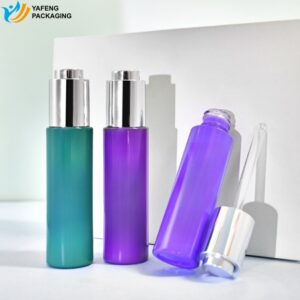
Haberler & Blog
İş dünyasında büyük işler asla tek bir kişi tarafından yapılmaz. Bunlar bir ekip tarafından yapılıyor. Bizde bu dinamik insan grubu var.
Güzellik endüstrisi, plastik ambalajlara olan bağımlılığı ve bunun sonucunda ortaya çıkan atıklar nedeniyle giderek artan bir incelemeyle karşı karşıya. Bu makalede kozmetik sektöründe plastik ambalajın yarattığı zorluklar ele alınmakta, mevcut geri dönüşüm çabaları incelenmekte ve potansiyel sürdürülebilir ambalaj çözümleri tartışılmaktadır. Kozmetik ambalaj sorununun karmaşıklığını anlamak ve güzellik endüstrisinin nasıl daha sürdürülebilir bir geleceğe doğru ilerleyebileceğini keşfetmek için okumaya devam edin.

Kozmetik endüstrisi, birkaç temel faktör nedeniyle ambalajlama için büyük ölçüde plastiğe güvenmektedir. Plastik hafif, dayanıklı ve üretiminin nispeten ucuz olması, maliyetleri en aza indirmek ve çevreyi korumak isteyen üreticiler için cazip bir seçenek haline getirmektedir. güzellik ürünleri nakliye ve taşıma sırasında. Ayrıca, plastik bütünlüğünü korumak için çok önemli olan sızıntı ve kontaminasyonu önleyen mükemmel bariyer özellikleri sunar. kozmeti̇k ürünler. Plastik ayrıca çeşitli şekil ve boyutlarda kolayca kalıplanabilir, görsel olarak çekici ve işlevsel ambalaj tasarımı tüketicileri cezbeder. Bu esneklik, son derece rekabetçi olan kozmetik pazarıraf çekiciliğinin satın alma kararlarında önemli bir rol oynadığı yerlerde.
Bu işlevsellik plasti̇k ambalaj teklifleri, kullanımının arkasındaki önemli bir nedendir. Kozmetik şirketleri neme, yağlara ve yaygın olarak bulunan diğer bileşenlere dayanıklı malzemelere ihtiyaç duyar kozmetik formülasyonlar. Plastik bu korumayı sağlayarak kozmetik ürün raf ömrü boyunca stabil ve etkili kalır. Alternatif ambalaj malzemeleri̇ cam veya alüminyum gibi daha pahalı ve daha ağır olabilir, bu da üretim ve nakliye maliyetlerini artırır. Aynı zamanda kağıt bazlı ambalajlar bir seçenek olsa da, genellikle yeterli koruma sağlamak için gerekli bariyer özelliklerinden yoksundur. kozmeti̇k ürünler. Bu plasti̇k ambalaj ayrıca üstün baskı ve etiketleme özellikleri sunarak güzellik markaları Ürün bilgilerini ve marka mesajlarını tüketicilere etkili bir şekilde iletmek.
Bu güzelli̇k endüstri̇si̇ni̇n çevresel etki̇leri̇ önemli, bunun başlıca nedeni ise ambalaj miktarı üretir. Plastik atık itibaren kozmeti̇k ambalajlar katkıda bulunur Kirlilik çeşitli şekillerde. Önemli bir kısmı kozmeti̇k paketleri̇ Sonunda çöp sahası Burada ayrışması yüzlerce yıl sürebilir. Bu süre zarfında, plastikler zararlı kimyasalları toprağa ve suya sızdırabilir, bu da Kirlilik. Üstelik, plasti̇k atik uygun şekilde yönetilmediği takdirde okyanuslara karışarak deniz yaşamına ve ekosistemlere zarar verebilir. Bu nedenle güzellik ürünlerinin imhası ve bunlarla ilişkili paketleme için ciddi bir zorluk teşkil etmektedir. atik yöneti̇mi̇ küresel olarak sistemler.
Acil durumun ötesinde Kirlilik neden olduğu plasti̇k atik'nin üretimi plastik aynı zamanda önemli bir çevresel etki. Çoğu ürünün hammaddesi olan fosil yakıtların çıkarılması ve rafine edilmesi plastiklersera gazlarını atmosfere salarak iklim değişikliğine katkıda bulunur. Üretim sürecinin kendisi de önemli ölçüde enerji ve su tüketerek iklim değişikliğine katkıda bulunmaktadır. çevresel etki. Hatta ne zaman plastikler vardır geri dönüşüm, the geri dönüşüm süreci enerji ve kaynak gerektirir ve hepsi değil plastik etkili bir şekilde geri dönüşüm. Bu faktörlerin kümülatif etkisi paketleme sorunu içinde güzellik endüstrisi acil ilgi ve yenilikçi yaklaşım gerektiren acil bir konu sürdürülebi̇li̇r çözümler.
Bu güzellik endüstrisi'a katkısı plasti̇k ki̇rli̇li̇ği̇ önemli ve büyümektedir. Bu nedenle kozmeti̇k endüstri̇si̇ milyarlarca birim enerji üretir. paketleme yıllık olarak, önemli bir yüzdesi tek kullanımlık ambalajlar. Plastik ambalaj atıkları bir şey yok. güzellik endüstrisinin ürünler ve ambalajlar küresel atık akışına önemli ölçüde katkıda bulunarak zaten aşırı yük altında olan atik yöneti̇mi̇ sistemler. Büyük hacimli kullanılan ambalajlar içinde kozmeti̇k ve ki̇şi̇sel bakim öğelerdeki küçük iyileştirmelerin bile ambalaj tasarımı ve geri dönüşüm oranlarının önemli bir olumlu etkisi olabilir.
Çeşitli çevre örgütlerinin tahminlerine göre kozmeti̇k ve ki̇şi̇sel bakim sektörünün önemli bir kısmından sorumludur. toplam atık yıllık olarak üretilmektedir. Örneğin, aşağıdaki gibi kuruluşlar İngiliz Güzellik Konseyi acil ihtiyacın altını çizmiştir kozmeti̇k şi̇rketleri̇ sorumluluk almak için atık ile ilişkili paketleme. Sorunun daha da kötüleşmesine neden olan şey ise paketleme genellikle kullanılan KOZMETİK şunlardan oluşur çok malzemeli ambalaj tasarımlarızor ve maliyetli hale getirmektedir. geri dönüşüm. Bu da şu anlama geliyor paketleme atık olarak sona erer içinde çöp sahaları ya da çevreyi kirletmek.

Geri Dönüşüm kozmeti̇k ambalajlar doğası gereği çok sayıda zorluk ortaya koymaktadır. paketleme kendisi ve karmaşıklığı geri̇ dönüşüm altyapisi. Öncelikli konulardan biri de plastik türü kullanılan kozmetik kaplar. Birçok kozmeti̇k paketleri̇ karışık malzemeden yapılır plastikler veya kolayca kullanılamayan malzemeler geri dönüşüm standart tesislerde. Ayrıca, küçük boyutları ve karmaşık tasarımları birçok kozmetik konteynerler bunların ayrıştırılmasını ve etkili bir şekilde işlenmesini zorlaştırmaktadır. İçinde artık ürün bulunması boş kozmeti̇k konteynerler de kirletebilir geri dönüşüm akarsular, daha fazla engelleme geri dönüşüm süreci.
Bir diğer önemli zorluk da tutarsızlıktır geri̇ dönüşüm altyapisi farklı bölgeler arasında. Nedir bu geri dönüşüm bir bölgede kabul görmeyebilir, bu da karışıklığa yol açabilir. güzellik tüketicileri ve nihayetinde, plasti̇k ürünler çöpe gidiyor. Bu paketleme genellikle farklı malzemelerden yapılmış pompalar, kapaklar ve etiketler içerir. plastikler veya malzemeler için ek ayırma adımları gerektirir. geri dönüşüm tesisler bununla başa çıkacak donanıma sahip değildir. Daha küçük ambalaj boyutlarıyaygın olarak kozmeti̇k endüstri̇si̇'de çatlaklardan düşebilecekleri için de sorunlu olabilirler. geri dönüşüm Makine. Bu zorlukların üstesinden gelmek, aşağıdakiler arasında işbirliği gerektirir kozmeti̇k şi̇rketleri̇, ambalaj tedari̇kçi̇leri̇, atik yöneti̇mi̇ verimliliğini ve etkinliğini artırmak için tesisler ve tüketiciler geri dönüşüm çabalar.
Ambalaj malzemesi türleri ve geri dönüşüm oranları için tablo aşağıda verilmiştir.
| Ambalaj Malzemesi Türü | Yaygın Kozmetik Kullanımı | Geri Dönüştürülebilirlik Oranı (Yaklaşık) | Geri Dönüşümde Karşılaşılan Zorluklar |
|---|---|---|---|
| PET (Polietilen Tereftalat) | Şişeler, Kavanozlar | Yüksek | Kalıntı ürün kontaminasyonu, Renklendiriciler |
| HDPE (Yüksek Yoğunluklu Polietilen) | Şişeler, Tüpler | Yüksek | Kalıntı ürün kontaminasyonu, Renklendiriciler |
| PP (Polipropilen) | Kapaklar, Kapaklar, Kavanozlar | Orta | Karışık malzemeler, Küçük ebatlar |
| PVC (Polivinil Klorür) | Blister Ambalajlar, Şişeler | Düşük | Sınırlı geri dönüşüm tesisleri, Katkı maddeleri |
| PS (Polistiren) | Kompaktlar, Tepsiler | Düşük | Genellikle geri dönüşüm programları tarafından kabul edilmez |
| Cam | Şişeler, Kavanozlar | Yüksek | Ayıklama sırasında kırılma, Ağırlık |
| Alüminyum | Aerosol Kutular, Tüpler | Yüksek | Özel geri dönüşüm süreçleri gerektirir |
İyileştirirken geri̇ dönüşüm altyapisi şüphesiz çok önemlidir, ancak bu sorun için tam bir çözüm değildir. kozmeti̇k ambalaj sorunu. Geliştirmeler geri dönüşüm gelişmiş ayıklama teknolojileri ve çeşitli türde atıkların işlenmesi için artırılmış kapasite gibi tesisler plastiklerkesinlikle artırabilir geri dönüşüm oranlar ve yönlendi̇rme atıklar gider uzakta çöp sahası. Bununla birlikte, mevcut geri dönüşüm süreci hala sınırlamalarla karşı karşıya ve hepsi değil plasti̇k ambalaj etkili bir şekilde geri dönüşümEn iyi altyapıya sahip olsanız bile. Örneğin, belirli türdeki plastikler her seferinde kaliteleri düşer geri dönüşümBu da yeniden kullanım sayısını sınırlandırır.
Dahası, yalnızca geri dönüşüm yanlış bir güvenlik hissi yaratabilir ve azaltma çabalarını caydırabilir atık kaynağında. Daha kapsamlı bir yaklaşım aşağıdakileri içerir güzellik endüstrisinin azaltılması atık gibi stratejiler aracılığıyla daha küçük ambalaj boyutları, tasarım paketleme bu kolayca geri dönüşümve teşvik etmek yeniden doldurulabilir veya tekrar kullanılabilir ambalajlar. Yatırım yapmak sürdürülebi̇li̇r ambalaj çözümleri̇ ve cesaretlendirici sürdürülebi̇li̇r uygulamalar arasında kozmeti̇k şi̇rketleri̇ gerçek anlamda ele alınması için gereklidir. güzelli̇ği̇n çevresel etki̇si̇.
İşte geri dönüşüm kodları ve tanımı için tablo.
| Geri Dönüşüm Kodu | Malzeme | Kozmetik Ambalajlama Örnekleri | Ortak Geri Dönüşüm Kullanılabilirliği |
|---|---|---|---|
| 1 PET | Polietilen Tereftalat | Su ve soda şişeleri | Yaygın kabul |
| 2 HDPE | Yüksek Yoğunluklu Polietilen | Süt sürahileri, deterjan şişeleri | Yaygın kabul |
| 3 PVC | Polivinil Klorür | Borular, döşeme | Sınırlı kabul |
| 4 LDPE | Düşük Yoğunluklu Polietilen | Plastik torbalar, film sargıları | Genellikle kaldırım kenarına kabul edilmez |
| 5 PP | Polipropilen | Yoğurt kapları, şişe kapakları | Giderek daha fazla kabul görüyor |
| 6 PS | Polistiren | Köpük bardaklar, paket servis kapları | Sınırlı kabul |
| 7 Diğer | Karışık Plastikler | Çok katmanlı paketleme | Nadiren kabul edilir |
için uygulanabilir alternatifler arayışı plastik içinde güzellik ambalajları birkaç umut verici seçeneğin ortaya çıkmasıyla ivme kazanıyor. Cam geleneksel bir paketleme seçeneği bu son derece geri dönüşüm ve bozulmadan sonsuza kadar yeniden kullanılabilir. Alüminyum başka bir geri dönüşüm hafif ve mükemmel bariyer özellikleri sağlayan bir malzemedir. Kağıt bazlı ambalajlarözellikle biyolojik olarak parçalanabilir veya gübrelenebilir malzemelerle kaplandığında sürdürülebilir Belirli kişiler için alternatif güzellik ürünleri.
Ancak bu alternatiflerin her birinin kendine özgü zorlukları vardır. Cam, camdan daha ağır ve daha kırılgan olabilir. plastikBu da nakliye maliyetlerini ve kırılma riskini artırır. Alüminyum üretmek için önemli miktarda enerji gerektirir, ancak yüksek geri dönüşüm oranı bunun bir kısmını telafi etmeye yardımcı olur çevresel etki. Kağıt bazlı ambalajlar neme ve yağlara karşı yeterli koruma sağlamayabilir, bu da bazı ürünler için uygun olmayabilir kozmetik ürün formülasyonlar. Mısır nişastası veya şeker kamışı gibi yenilenebilir kaynaklardan elde edilen biyoplastikler gibi yenilikçi malzemeler de araştırılmaktadır. Biyoplastikler fosil yakıtlara bağımlılığı azaltma potansiyeli sunarken, her zaman biyolojik olarak parçalanamayabilir veya geri dönüşüm mevcutta atik yöneti̇mi̇ sistemleri. Alternatif seçimi paketleme özel gereksinimleri de dahil olmak üzere çeşitli faktörlere bağlıdır. kozmetik ürün, the sürdürülebi̇li̇rli̇k hedefleri kozmeti̇k markasive uygun araçların mevcudiyeti atık bertarafı altyapı.

Birçok güzellik markaları aktif olarak benimsiyor sürdürülebi̇li̇r uygulamalar azaltmak için çevresel etki ve artan talebi karşılamak için sürdürülebi̇li̇r güzelli̇k ürünler ve ambalajlar. Bu çabalar şunları içerir sürdürülebilir ambalaj kullanımı malzemeler, örneğin geri dönüştürülmüş plastikcam, alüminyum ve kağıt bazlı ambalajlaruygulamasının yanı sıra ambalaj tasarımı en aza indiren stratejiler atık. Bazıları güzellik markaları yatırım yapıyorlar yeniden doldurulabilir ambalajBöylece tüketiciler her bittiğinde yeni kap almak yerine yedek kap satın alabilirler. ürünler.
Kozmetik şirketleri aynı zamanda yenilikçi ambalaj çözümleri̇gerektiren konsantre formüller gibi daha küçük ambalaj boyutlarıve katı kozmetik ihtiyacını ortadan kaldıran çubuklar plastik şişeler. Birçok güzellik markası ile ortaklık yapıyoruz ambalaj tedari̇kçi̇leri̇ yeni geliştirmek için sürdürülebi̇li̇r malzemeler ve uygulamalarve hatta bazıları teklif ediyor geri dönüşüm programları için paketlemeBöylece tüketicilerin çöplerini uygun şekilde imha etmeleri kolaylaşır. boş kozmeti̇k kaplar. Bu credos güzellik ve diğer perakendeciler de küratörlük yaparak bir rol oynuyorlar sürdürülebi̇li̇r ürünler ve öncelik veren markaları teşvik etmek çevresel Sorumluluk. Bunları benimseyerek sürdürülebi̇li̇r uygulamalar, büyük kozmeti̇k markalari azaltma konusundaki kararlılıklarını ortaya koymaktadırlar. atiklarin çevre üzeri̇ndeki̇ etki̇si̇.
Ambalaj tedarikçileri çok önemli bir rol oynamaktadır. kozmeti̇k endüstri̇si̇'a doğru geçişi sürdürülebi̇li̇rli̇k. Bu şirketler, aşağıdakileri geliştirmek ve sağlamaktan sorumludur ambalaj malzemeleri̇ ve teknolojiler kozmeti̇k şi̇rketleri̇ güveniyor. Bu nedenle, aşağıdaki alanlarda yenilikçiliğin ön saflarında yer almaktadırlar sürdürülebi̇li̇r ambalaj çözümleri̇. Ambalaj tedarikçileri yeni malzemeler yaratmak için araştırma ve geliştirmeye yatırım yapıyor. geri dönüşümbiyolojik olarak parçalanabilir veya gübrelenebilir olmasının yanı sıra paketleme en aza indiren atık.
Ayrıca, ambalaj tedari̇kçi̇leri̇ ile çalışıyoruz kozmeti̇k şi̇rketleri̇ optimize etmek için ambalaj tasarımı için sürdürülebi̇li̇rli̇kmalzeme seçimi gibi faktörleri göz önünde bulundurarak, ambalaj miktarıve geri dönüşüm uyumluluk. Ayrıca, aşağıdakilere yardımcı olmak için uzmanlık ve rehberlik sağlarlar kozmeti̇k şi̇rketleri̇ karmaşık manzarasında gezinmek sürdürülebilir ambalaj, onların paketleme her ikisini de karşılar çevresel standartlar ve düzenleyici gereklilikler. Aşağıdakilerle yakın işbirliği yaparak güzellik markaları, ambalaj tedari̇kçi̇leri̇ benimsenmesine yardımcı oluyor. sürdürülebi̇li̇r uygulamalar boyunca kozmeti̇k endüstri̇si̇ ve daha döngüsel bir ekonomiye geçişi hızlandırmak.
Tüketiciler şu konularda önemli bir rol oynamaktadır atıkların azaltılması itibaren kozmeti̇k ambalajlar. Bilinçli satın alma kararları vererek ve sorumlu bir yaklaşım benimseyerek atık bertarafı alışkanlıklarına sahip bireyler, kolektif olarak sürdürülebi̇li̇r ürünler ve teşvik etmek kozmeti̇k şi̇rketleri̇ önceliklendirmek için çevresel Sorumluluk. Tüketiciler aşağıdakileri seçerek başlayabilir güzellik ürünleri ile mi̇ni̇mali̇st ambalaj veya yeniden doldurulabilir veya tekrar kullanılabilir ambalajlar. Destekleyici güzellik markaları taahhüt eden sürdürülebi̇li̇rli̇k ve şeffaflık paketleme uygulamaları açık bir mesaj gönderir. kozmeti̇k endüstri̇si̇ tüketicilerin değer verdiği çevresel yöneticilik.
Ayrıca, tüketiciler uygun şekilde geri dönüşüm boş kozmeti̇k Mümkün olduğunca konteynerleri temizlemek ve tasnif etmek için zaman ayırın paketleme yerel yönetimlere göre geri dönüşüm yönergeler. Ne zaman geri dönüşüm bir seçenek değilse, alternatifleri araştırmak atık bertarafı kompostlama gibi yöntemler veya marka-destekli geri alma programları, geri dönüşümün yönlendirilmesine yardımcı olabilir atık itibaren çöp sahası. Farkındalıklı bir yaklaşımı benimseyerek güzellik ve kişisel bakım tüketimi ve aktif olarak sürdürülebilir alternatifleri ile tüketiciler güçlü değişim aracıları olabilirler. kozmeti̇k endüstri̇si̇. Güzellik tüketicileri ayrıca arkadaşlarınız ve ailenizle ipuçlarını ve bilgileri paylaşarak atıkların azaltılması ve teşvik etmek sürdürülebi̇li̇r güzelli̇k alışkanlıklar.
Geleceğin sürdürülebilir güzellik ambalajları yenilikçi malzemelerin, döngüsel ekonomi modellerinin ve dünya genelinde artan işbirliğinin bir kombinasyonunu içermesi muhtemeldir. güzellik endüstrisi. Teknoloji ilerledikçe, yeni teknolojilerin geliştiğini görmeyi bekleyebiliriz. sürdürülebilir ambalaj hem yüksek performanslı hem de çevre dostu malzemeler. Biyoplastikler, bitki bazlı polimerler ve diğer yenilenebilir malzemeler daha yaygın ve uygun maliyetli hale gelecek ve geleneksel malzemelere uygulanabilir alternatifler sunacaktır. plastikler.
Kozmetik endüstrisi döngüsel ekonomi ilkelerini benimsemeli, döngüsel ekonomiye uygun tasarımlar yapmalıdır. paketleme yeniden kullanılmak üzere tasarlanmıştır, geri dönüşümveya ömrünün sonunda kompostlaştırılır. yaşam döngüsü. Yeniden doldurulabilir ambalaj sistemler daha yaygın hale gelecek ve tüketicilerin atık sadece en sevdikleri ürünleri yenileyerek ayak izi ürünler yeni konteynerler almak yerine. Kozmetik şirketleri şunları yapmalıdır ayrıca kapalı döngü geri dönüşüm programları, aşağıdakilerin sağlanması paketleme malzemeler toplanır, işlenir ve yeniden kullanılır. güzellik endüstrisi. Arasındaki İşbirliği kozmeti̇k şi̇rketleri̇, ambalaj tedari̇kçi̇leri̇, atik yöneti̇mi̇ tesisler ve tüketiciler gerçek anlamda bir sürdürülebilir paketleme ekosistem. 2024 yılında, the kozmeti̇k endüstri̇si̇ daha da büyük adımlar atması bekleniyor. sürdürülebilir ambalajTüketici talebi, düzenleyici baskılar ve çevreye verilen önemin giderek daha fazla fark edilmesiyle çevresel sorumluluk.
10 Sürdürülebilir Güzellik Ambalajı için Temel Çıkarımlar:
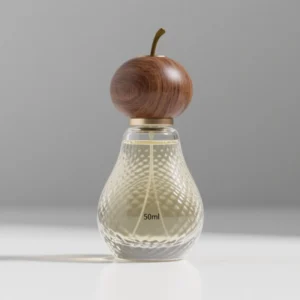
Şık ve yüksek kaliteli ambalajlar için en iyi malzemeyi seçmenize yardımcı olmak üzere doku, artılar, eksiler ve fiyatı karşılaştırarak parfüm kapakları için en iyi 10 ahşabı keşfedin.
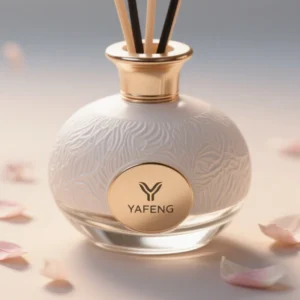
Rattan aromaterapinin nasıl çalıştığını ve cam şişelerin neden uzun süre kalıcı koku, güvenlik ve sürdürülebilir, zarif ambalaj için en iyi seçim olduğunu keşfedin.

Cam ve plastik ambalajların çevresel etkilerini keşfedin ve bilinçli, çevre dostu seçimler yapın.
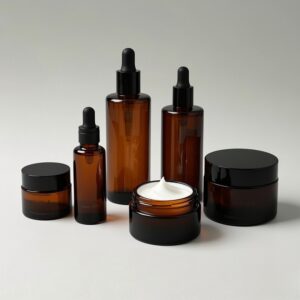
Amber cam şişeler güzellik ambalajları için lüks, UV koruması ve stabilite sunar. Üretimleri, kalite kontrolleri ve cilt bakım markaları için faydaları hakkında bilgi edinin.

Uçucu yağları saklamak için en iyi şişeleri keşfedin. Cam ve plastik, renk seçenekleri ve yağın gücünü korumaya yönelik ipuçları hakkında bilgi edinin.
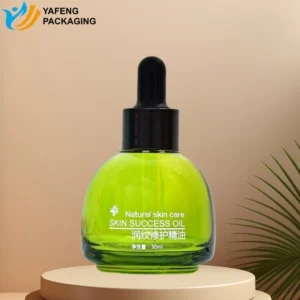
Sprey kaplamanın, ileri teknoloji ile görünümü, marka kimliğini, dayanıklılığı ve güvenliği iyileştirerek cilt bakımı ve parfüm ambalajlarını nasıl geliştirdiğini keşfedin.
Cilt bakımı ambalajları için özel ve stok şişeleri keşfedin. Bu derinlemesine kılavuzda Yafeng'in çözümlerinin marka kimliğini, kaliteyi ve verimliliği nasıl artırdığını öğrenin.

Degrade renk spreyinin kozmetik cam şişelerini nasıl dönüştürdüğünü, marka imajını nasıl geliştirdiğini ve ürün çekiciliğini nasıl artırdığını Yafeng Packaging'in uzman görüşleriyle keşfedin.

Rattan aromaterapinin nasıl çalıştığını ve cam şişelerin neden uzun süre kalıcı koku, güvenlik ve sürdürülebilir, zarif ambalaj için en iyi seçim olduğunu keşfedin.

Şık ve yüksek kaliteli ambalajlar için en iyi malzemeyi seçmenize yardımcı olmak üzere doku, artılar, eksiler ve fiyatı karşılaştırarak parfüm kapakları için en iyi 10 ahşabı keşfedin.
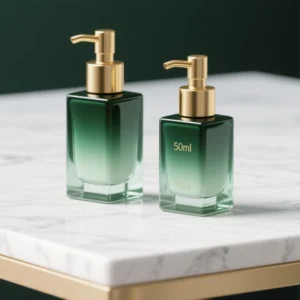
Kozmetik cam şişelerin güvenliğini, ekolojik faydalarını, türlerini, renklendirmesini, kalıp maliyetlerini, MOQ'unu ve üretim ipuçlarını tek bir uzman, veri açısından zengin kılavuzda keşfedin.
WhatsApp bize mesaj gönderin